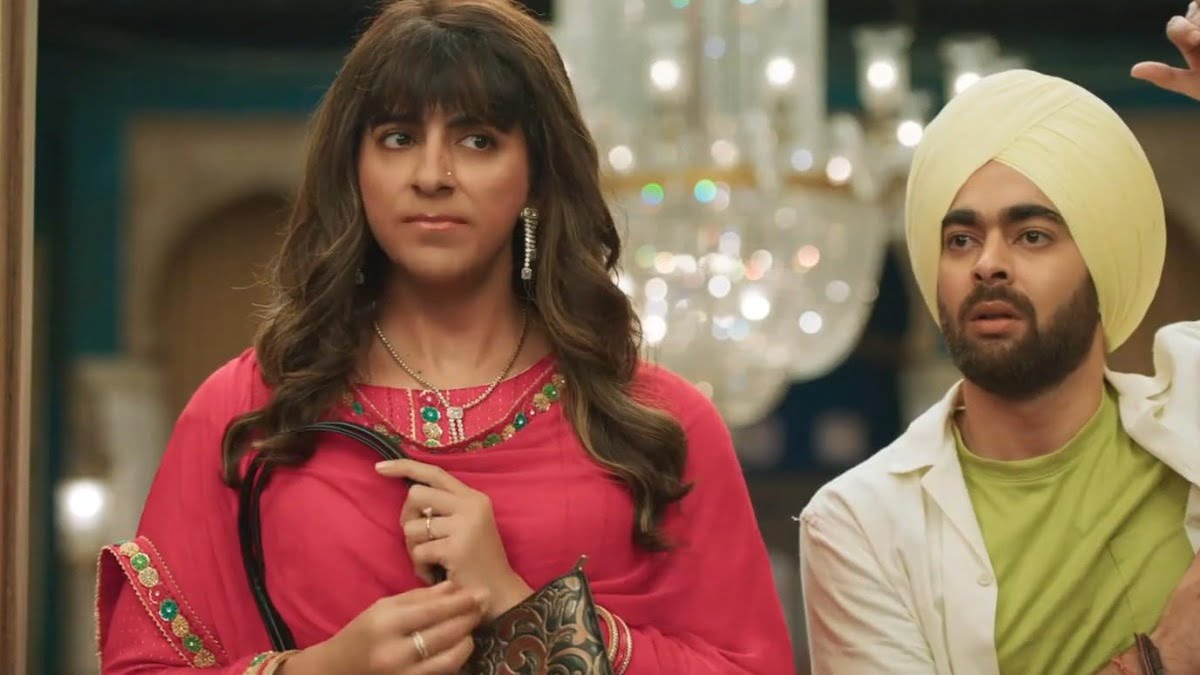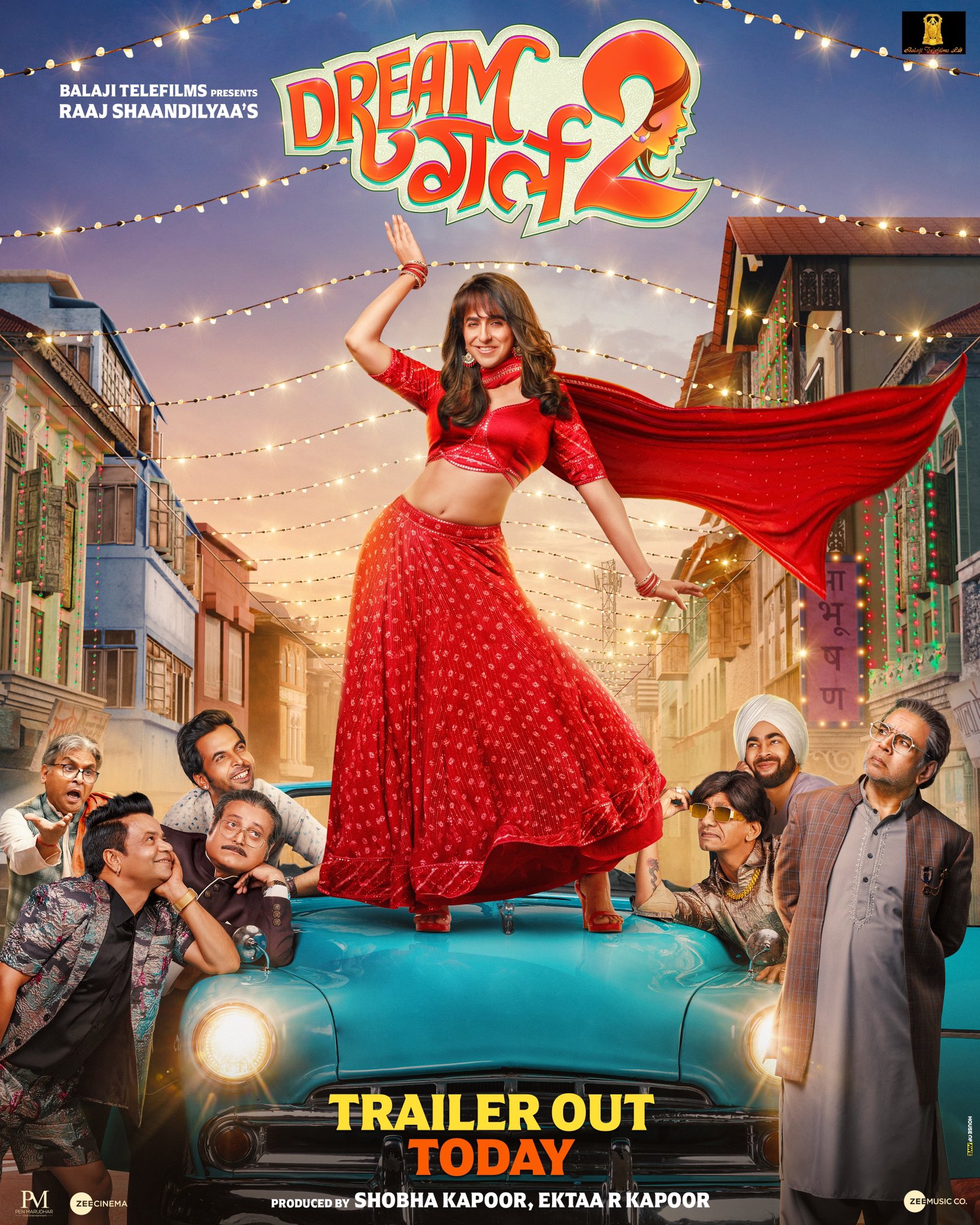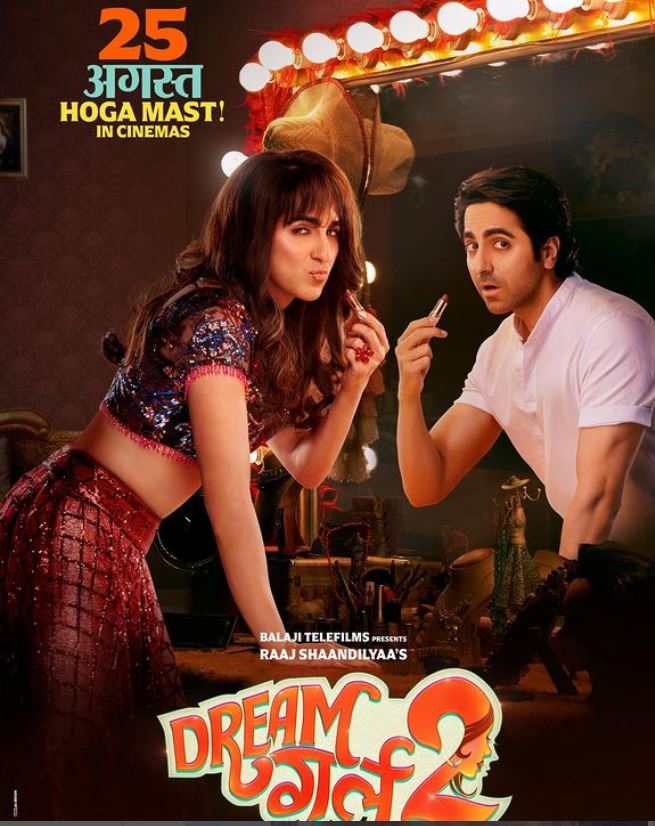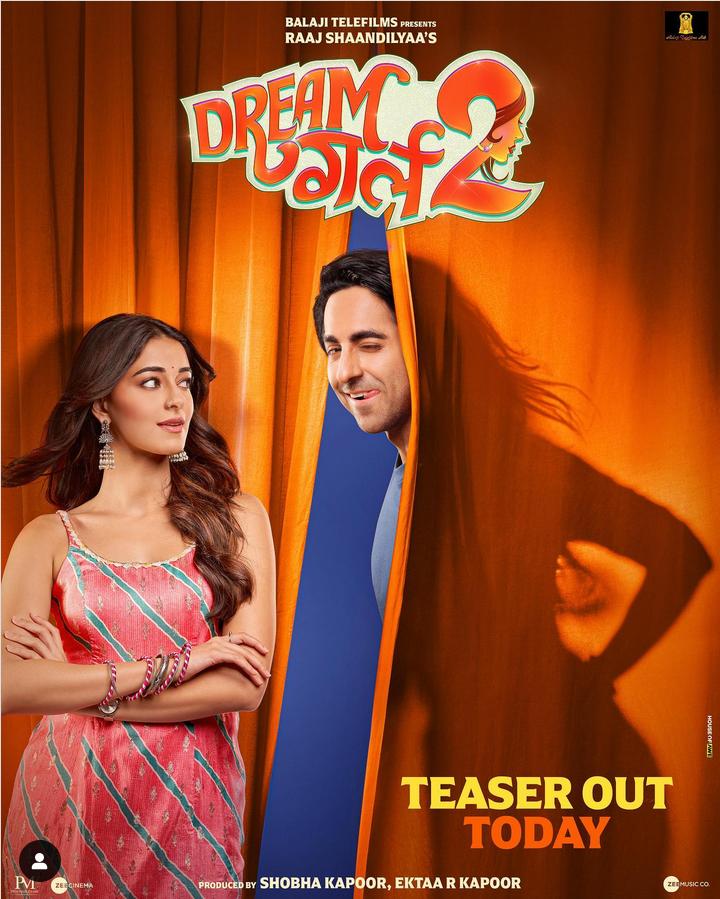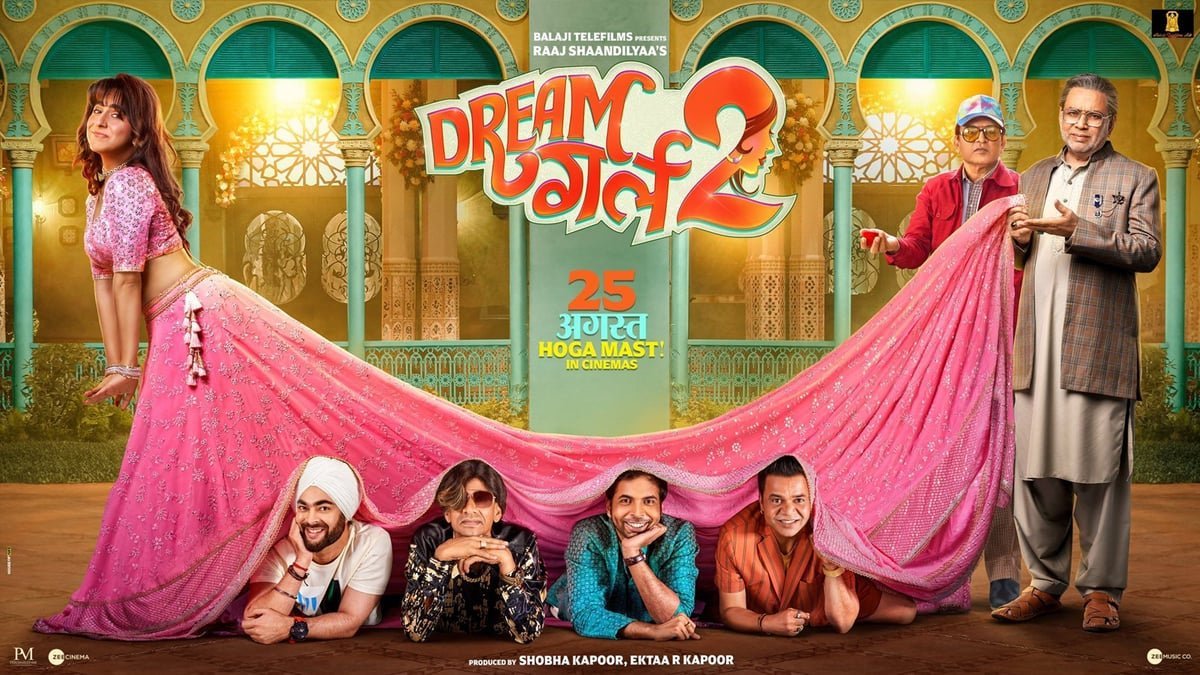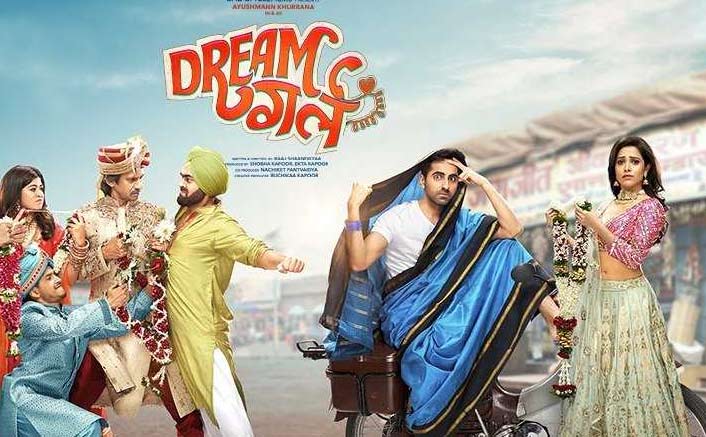Dream Girl 2 is a naïve attempt to score a box office hit while squeezing in all sorts of sexist jokes together in 133 minutes of comic mockery. Director Raaj Shaandilyaa brings the sequel four years after the success of his first installment of Dream Girl. With an intentional repetition of actors and a decent milieu, the movie staggers as a comedy film. It has its moments but all of them are colored with shades of patriarchal bias and masochistic supremacy.
Dream Girl 2: phallocentricism at its peak
The paradox of phallocentrism in all its manifestation is that it depends on the image of the castrated woman to give order and meaning to this world.
Laura Mulvey, Visual Pleasure and Narrative Cinema
In this text, Laura Mulvey discusses how phallocentrism plays a key role in the depiction of women in cinema and how the ‘castrated woman‘ defines representation. The psychoanalysis of Dream Girl 2 is imperative as it explains how Bollywood graduated from objectifying women to mocking their existence. ‘Woman’ and her anatomy are mocked and played with. From oranges becoming breasts and facial hair to waxing chest hair and the sensual latkas and jhatkas, the representation of femininity is stereotyped in cinema.
In a phallocentric society, the castrated woman is shown to quench her desire to possess a phallus by playing the damsel or the mother. In Dream Girl 2, Karamveer played by Ayushmann Khurana erases the existence and desire of the woman by trying to mimic her. She is neither the dream (desire) nor the girl (object).
Becoming woman in Dream Girl 2
Karamveer becomes Pooja when forced to earn a certain amount. He realises that a bar dancer earns a hefty amount and if he plays this role well, he could accumulate the money in no time. The sudden transformation has him wearing a red sequin saree and the lustful gaze of the men in the mohalla asserts the idea of the male gaze. The male gaze is celebrated, and decorated and the objectification happens accordingly.
Ayushmann’s Karamveer never becomes a woman; he only mocks her. The idea of becoming a woman is a longer process than slapping two oranges inside a blouse and waxing the extra hair off the chest. Gender is a deeper construct and movies that claim to depict its nuances must attempt a more sincere effort.
Bar dancers are not merely women who dance at a decorated bar stage and collect wads of currency notes at the end of the day. They are women molested, taken advantage of, and almost always negotiating their space in patriarchy. They are the objects of desire castrated of any identity. Ayushmann’s “Dream Girl” on the other hand never sincerely delved into the lives of bar dancers. He is conveniently lifted from the bar and transported to a comfortable home pretending to be a psychiatrist, he not only mocks womanhood but a profession that challenges and stereotypes femininity.
Cross-dressing as an occupation
Karamveer’s father nudges him to dress like a woman because he used to do so when he was young. The young child’s play is translated into a necessity for occupation. The idea that cross-dressing could be reduced to a cheap joke is the long-standing gaze of the Indian audience. The casual jokes about a feminine man or jokes related to a woman’s breast sise being determined by watermelon, orange, or grapes are the slapstick comedy the audience chuckles at.
Wearing makeup and clothes and mimicking women is a mockery of every individual who puts on the other gender’s clothes to assert their identity.
Cross-dressing is a serious gambit of identity exploration and assertion. Wearing makeup and clothes and mimicking women is a mockery of every individual who puts on the other gender’s clothes to assert their identity. An expression is exploited until it becomes a joke disregarding the toll that representation in media would have to suffer. It is movies like Dream Girl 2 that push the social narrative a decade back.
The lost balance in Dream Girl 2
Dream Girl 2 tries to establish a skewed social balance by inserting the occasional responsible messaging. The comment, ‘mannat ki ladki paida ho’ (prayer for a girl to be born) very loosely supports the structure of the movie, if at all. It attempts to sound responsible but very soon loses the plot.
The movie that claims to depict the journey of a man posed like a woman forgets its women characters easily. Karamveer’s mother is never mentioned in the movie, and neither is Pari’s (Ananya Pandey). Pari is a lawyer by profession, but she is shown as a simple-minded woman who is easily molded. In a particular scene, she tries to give her mother’s jewelry to Ayushmann to fulfill her father’s condition. She doesn’t have a voice or agency. She is gullible and easily believes in whatever narrative is served to her. In the beginning, she is wittily described as ‘Papa ka Pari’ a patriarchal joke served cold.
Dealing with ‘ladies’ problem’
Dream Girl 2 doesn’t stop at mimicking women, it further uses menstruation and pregnancy as drivers of the comic plot. Pooja played by Ayushmann marries a boy and then tries to stall the act of consummation by quoting the ‘ladies’ problem’. She calls menstruation the ladies’ problem throughout the narrative and uses it as an excuse to use the washroom frequently, to change the alias.
The mockery of the ‘ladies’ problem‘ doesn’t stop at that. Pooja is suspected to be pregnant because she is caught vomiting. Bollywood has still not matured from the myopic representation of pregnancy as vomiting. The bowel movement triggered by the consumption of alcohol is celebrated as pregnancy. When confronted by the fact that pregnancy is not possible, she is taken to a baba.
A comedian playing Baba who specialises in all things “ladies’ problems”, assures the couple that they will have twins. The silly emphasis on superstition and mocking the womb appear distasteful and make the experience of watching the movie sour.
Death, dowry and double entendre in Dream Girl 2
Dream Girl 2 tries too hard to strike up a conversation with Gen-Z while cracking the same old patriarchal jokes. Death is mocked when it is connoted only with silence, double intentions, and the superstition of postponing everything holy for a year. Dowry becomes a pun when it is suggested that the money from dowry could be used to pay off loans.
The casual lipstick stain on Ayushmann, the eye makeup smudged, and confusing hugs that appear incestuous open a whole domain of indecent conversations and cheap chuckles.
Double Entendre are phrases that have double intentions, one of which is almost always indecent. Dream Girl 2 is laden with such phrases. They are distasteful and demeaning. The casual lipstick stain on Ayushmann, the eye makeup smudged, and confusing hugs that appear incestuous open a whole domain of indecent conversations and cheap chuckles.
Queer relationships in Dream Girl 2
Karamveer or Pooja marries Shahrukh, a seemingly depressed man. The chaos that follows is one of confusion, comedy, and cacophony. The insensitive depictions of sharing the same bed, the unrealistic realisation of space, and demeaning the very meaning of marriage, this relationship opens a can of worms that the movie fails to address.
It is revealed through the climax that Shahrukh is queer. He addresses Pooja when confronted with her reality and states how he likes boys. The movie silently explains that Shahrukh’s depression was linked to his queer identity, but it is not quite discussed.
The irony of Dream Girl 2 is that it stumbles with the idea of the constructed woman in patriarchy while exploiting the patriarch’s idea of femininity. Phallocentrism or references to the penis are too many and too scattered. The peeing scene of Pooja post-marriage, the display of the penis, and the confusing costume changes appear almost circus-like.
The movie could very well have been a social media joke or a carousel of some together. From the perplexing beginning to the preaching end, it is a loose attempt to form a cinematic experience. It appears to be a desperate effort by the director and protagonist to crack a joke in a crowd of masochist patriarchs.
About the author(s)
Dr. Guni Vats is an Assistant Professor at the Department of English, Manav Rachna International Institute of Research and Studies. A PhD in Gender Studies, she is a renowned researcher, writer, and scholar.
